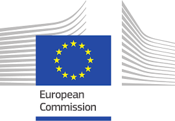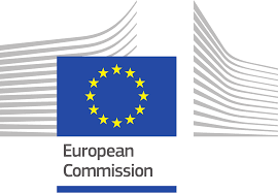The European Commission publishes intermediate evaluation of the EU Framework for the National Inclusion Strategies for the Roma population [editar]
The evaluation, which covers the period 2011-2017, is based on a broad consultation process of public authorities, civil society organizations and other relevant parties. It aims to provide information to the European Commission and other stakeholders to joint work in the remaining years in the implementation of the current framework and for the preparation of the future framework after 2020.

The evaluation, which covers the period 2011-2017, is based on a broad consultation process of public authorities, civil society organizations and other relevant parties. It aims to provide information to the European Commission and other stakeholders to joint work in the remaining years in the implementation of the current framework and for the preparation of the future framework after 2020.
On 4 December 2018 the European Commission released its evaluation of the EU Framework for National Roma Integration Strategies for the 2011-2017 period. The evaluation assesses the EU framework and how its objectives are working in practice analysing the specific form of poverty, discrimination, education, employment, health and housing. This evaluation aims to offer information to EU Commission and others stakeholders to support the implementation of the current period of Framework and also for the next future framework post 2020.
To this end, different sources have been used: a public consultation and an external evaluation, interviews and contacts with key actors, public authorities at national and European level and civil society has been included. The FSG contributed to the public consultation and was invited, as a relevant actor at national and European level, to participate in several of the initiatives developed in the framework of the external evaluation.
The assessment of the manifesto that the EU framework has been fundamental for the development of instruments and structures at national and European level to promote the inclusion of the Roma population, but the main objective of "ending the exclusion of the Roma" it has not been yet reached.
The conclusions of this evaluation and the previous ones related to national strategies show a several key priorities as.
- A more effective approach to the needs of Roma people in general policies. For this objective, it should be followed a double strategy that combines the consideration of Roma people in general policies in areas such as education, employment, health or housing, together with explicit measures to overcome specific disadvantages and ensure effective equality of access on these different areas. In addition, coherence between the EU Framework and other policies, both at the EU and international levels, should be strengthened, as well as the linkage between policy priorities and EU funding, including the European Structural and Investment Funds (ESI funds). In this regard, the European Commission proposes to the Member States to make full use of the investment priority regarding the socio-economic inclusion of marginalized communities such as the Roma population (9.2.), in the current Regulation of the European Social Fund and to maintain this investment priority in the Regulations of the ESI Funds for the next programming period 2021-2027.
- Greater attention to the fight against discrimination and anti-Gypsyism. The evaluation highlights the need to pay greater attention to the fight against discrimination and anti-Gypsyism in the EU Framework that complements, and does not replace, the inclusive approach. These areas should constitute a priority area of the Framework with a specific objective of non-discrimination at the same level as the priority areas of inclusion of the Roma population established in the current framework (employment, education, housing and health), while at the same time it maintains as a transversal priority with specific objectives in each of the other four areas of action.
- An improvement of the partnerships and the participation of Roma people. In general terms, national strategies do not connect effectively with general policies, since they are not consistently involved in key sectors and stakeholders. To address this deficiency requires the empowerment and development of the capacities of Roma people, civil society organizations, public authorities, particularly the Contact Points for National Strategies, and local authorities.
- Greater consideration of the diversity of the Roma population. National strategies should better reflect the needs of specific groups (in particular women, youth, children) and the diversity of conditions among the Roma population (for example, the main objectives and basic indicators). Likewise, the needs of Roma who move within the EU, the countries of the countries or the stateless gypsies are not taken into account.
- The best setting of objectives, data collection, supervision and information obtained with learning at a political level. The monitoring system and the information of the national strategies should provide information at the level of policies and programs, as well as explicit information on specific actions and on actions to be taken.
- Greater ambition for progress during the pre-accession phase of the candidate countries. The promotion of equal access to education, employment, health and housing has been incorporated as part of the enlargement process. All the countries of the enlargement have adopted a national strategy for the inclusion of the Roma population, have designated national contact points and use annual reporting systems similar to those of the Member States.
The FSG agrees that, as the evaluation indicates, the EU Framework for national Roma inclusion strategies until 2020 is the beginning of a process that, despite its many limitations and taking into account the enormous task that it supposes, has yielded positive results and generated a change of tendency. However, as the evaluation reflects, taking away some progress, the reduction of the inequalities faced by the Roma population in the different European countries is not tangible, there are great differences between countries. Therefore, much remains to be done both in the context of the current EU Framework (2011-2020) and the future framework (2021-2027).
We share, for the most part, the analysis of the European Commission and consider especially important the development and reform of generalist policies that are inclusive with the Roma population, the advance in the structures of coordination and cooperation at national, regional and local levels, the provision of greater competences and mandate to the National Contact Points as well as the intensification of investments and budget allocation of actions that meet the objectives of the Strategies in order to improve, once and for all, the living conditions of the Roma population and addressing expressly and without delay, the discrimination and anti-Gypsyism that the Roma population suffers daily. In addition a better use of ESI Funds, with investment strategies of scale and duration over time and connected with political priorities is essential. For this, the alignment, complementarity and coordination between the Framework for National Strategies and the ESI Funds is key. The coincidence of the current processes of defining the frameworks for the ESI Funds and for the National Strategies beyond 2020 offers an unprecedented opportunity to align and create synergies between these two instruments.

← BACK TO MAIN ‘NEWS’ PAGE

